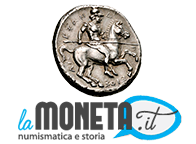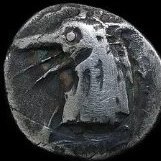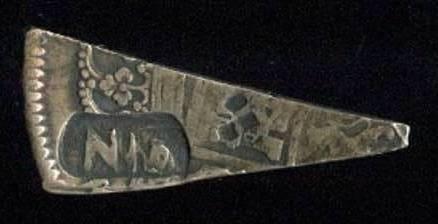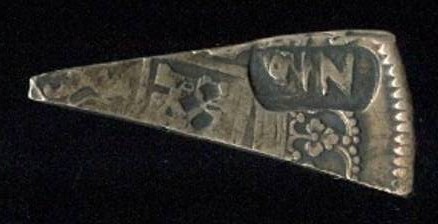Cerca nel Forum
Risultati per Tag 'colonie'.
Trovato 8 risultati
-
Cashew farmer chances on rare find: 832 copper coins from Portuguese era in Goa Unbeknownst to Joshi, he had stumbled on a “treasure” from centuries ago — 832 copper coins, believed to have been minted in Goa around the 16th or 17th Century when it was under Portuguese rule. Archaeology department says the coins likely from 16th or 17th Century, could offer insights into trade ties at that time A fortnight ago, Vishnu Shridhar Joshi, a farmer in North Goa’s Nanoda Bamber village, was clearing weeds at his cashew plantation when he noticed a pot buried in the soil. After a little digging, Joshi found a vessel that contained coins from a bygone era. Unbeknownst to Joshi, he had stumbled on a “treasure” from centuries ago — 832 copper coins, believed to have been minted in Goa around the 16th or 17th Century when it was under Portuguese rule. The rare discovery is now part of a study that will be undertaken by the state’s department of archaeology, which could offer insights into trade relations, commerce and the economic history of Goa during the early years of Portuguese rule. “We brought the vessel home and inside were a large number of coins with symbols and inscriptions. I was not sure what to do. I contacted the village panch and informed government officials. It appears that someone had buried this treasure here,” Joshi said. On Wednesday, state Minister of Archaeology Subhash Phal Dessai and a team of officials from the department visited the village and took custody of the coins. “Prima facie, from the alphabets and symbols, it appears that the coins were issued in the 16th-17th Century during early years of Portuguese rule. On some coins, one side has a cross and an alphabet, which could be interpreted as the initials of a king, under whose kingdom the coins may have been circulated,” said Dr Nilesh Fal Dessai, director, department of archaeology.Officials said the “buried treasure” could offer insights into Goa’s numismatic history. ADVERTISEMENT Experts will undertake a study to ascertain when the coins were minted and circulated, and to understand mercantile trade relations at the time. “There were no banks at the time. There is not much documentation about the kind of currencies that were in circulation then. Rulers often issued coins bearing initials of their names and inscriptions of religious symbols. Though it appears the coins are made of copper, we have to clean them and identify the metal composition using conventional techniques,” Dessai said. “It could be that these coins were part of someone’s personal collection or may have been buried for the purpose of hoarding for commerce. After a study, we will be able to conclusively establish their origin.” An official said, “During Old Conquests, Tiswadi, Bardez and Salcete talukas in Goa were under Portuguese rule. This discovery of coins from Sattari taluka is significant since it offers evidence of trade and economic relations during that period.” Archaeology Minister Dessai told the media, “After a thorough examination, the coins would be placed in the state museum, specifying the description of the location and crediting the person who found it.” https://indianexpress.com/article/india/cashew-farmer-chances-on-rare-find-832-copper-coins-from-portuguese-era-in-goa-9022286/ Rare 832 copper coins from the Portuguese era unearthed in Goa, India In Sattari, Nanoda, in the state of Goa on the west coast of India, 832 copper coins that are believed to be from the 16th or 17th-century Portuguese era were found at a cashew farm. Vishnu Shridhar Joshi, a farmer in Nanoda Bamber village, was clearing weeds at his cashew plantation a fortnight ago when he noticed a pot buried in the soil. After a little digging, Joshi discovered a vessel containing coins from a bygone era. He handed over the coins to a team of state archaeologists. The Goa archaeology department, headed by Minister Subhash Phal Dessai, is preparing to carbon-date the coins to determine their exact age and historical context. “A treasure has been discovered,” said director of archaeology Nilesh Fal Desai. “The coins are connected to the history of Goa’s erstwhile kingdoms and the people of the time. Prima facie, the coins are from the 16th or 17th century.” Joshi had unknowingly discovered a “treasure” from centuries ago — 832 copper coins believed to have been minted in Goa around the 16th or 17th century when it was under Portuguese rule. Goa was a Portuguese colony from 1510 to 1961. The small coastal area was conquered by Afonso de Albuquerque (c. 1453-1515) and became an important trade hub for the Eastern spice trade. For 450 years, Goa was the capital of the entire Portuguese Empire east of the Cape of Good Hope. The Archaeology department says the coins likely from the 16th or 17th Century, could offer insights into trade ties at that time. Photo: Indian Express The rare discovery is now part of a study that will be undertaken by the state’s Department of Archaeology, which could offer insights into trade relations, commerce, and the economic history of Goa during the early years of Portuguese rule. Officials said the “buried treasure” could offer insights into Goa’s numismatic history. “Prima facie, from the alphabets and symbols, it appears that the coins were issued in the 16th-17th Century during the early years of Portuguese rule. On some coins, one side has a cross and an alphabet, which could be interpreted as the initials of a king, under whose kingdom the coins may have been circulated,” said Dr Nilesh Fal Dessai. Joshi said the earthen pot was found at Haddiche Bharad situated on a hillock about 1km from the Kalasa nullah site. The coins are expected to offer historical riches because they were found on the Ghat pathway connecting British India with Portuguese India. Under Indian law, a treasure trove (buried treasure that has been lost or forgotten) is considered the government’s property. The law requires anyone who discovers such treasure to report to the authorities. https://arkeonews.net/rare-832-copper-coins-from-the-portuguese-era-were-unearthed-in-goa-india/
- 4 commenti
-
- goa
- portogallo
-
(e altri 2 tag)
Taggato come:
-
Salve, qualche considerazione su questa mia monetina? Cordialità e grazie Mirco
-
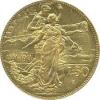
1 Rupia del 1912 Colonia Somala
Marino NM23 ha aggiunto un nuovo link in Regno d'Italia: identificazioni, valutazioni e altro
Buonasera a tutti i lamonetiani, volevo sottoporvi a uno dei miei ultimi acquisti. Essendo un patito delle colonie, mi sono regalato questa Rupia del 1912. Comprata da un venditore affidabilissimo, all'arrivo della moneta mi sono accorto che al dritto è presente un leggero rigonfiamento sotto la parola "RE". La moneta ovviamente è in argento ed è 3cm di diametro e 11,64gr, quindi conforme, però un minimo di dubbio mi è sorto (vista la mia non completa esperienza). So di famose bolle da fusione per i falsi, penso che qui però sia un'altra cosa, non credo di essere incappato in un falso come un pollo :pardon: , tuttavia cosa potrebbe essere questo famoso rigonfiamento? Allego sia dritto che rovescio. La parola a voi, e grazie a chi vorrà intervenire! :give_rose: -
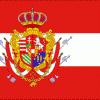
5 lek 1939
Luca_li ha aggiunto un nuovo link in Regno d'Italia: identificazioni, valutazioni e altro
Buonasera, gradirei un parere sulla conservazione di questo 5 lek. Grazie Luca -
1 Rupia 1890 DOA - Test Fotografico e della Patina
ray-ban ha aggiunto un nuovo link in Monete Estere
Salve a tutti, alcuni di voi penso si ricordino della Rupia che comprai e postai qui alcuni mesi fa. In caso negativo, o per coloro che non c'erano, allego il link ---> http://www.lamoneta.it/topic/94113-1-rupia-1890-deutsch-ostafrikanische-gesellschaft/ L'ho lasciata da allora all'aria, dentro una scatoletta porta gioielli con interni in velluto e sempre aperta e lasciata in camera mia sul balcone sotto la finestra, aspettando che si formasse una patina, e pare aver funzionato. Ancora non è del tutto patinata, e si vede bene solo quando non si è sotto una luce diretta, altrimenti si vede solo i fondi lucidi e i segni di una maldestra pulizia. Lascio a voi le foto della "prima volta" che ho fatto appena ricevuta, quelle fatte qualche tempo dopo, e queste fatte oggi, in 2 diverse modalità e con una tecnica da me inventata. Ditemi cosa ne pensate, sia della moneta prima e dopo, sia delle foto prima e dopo. Foto dell'asta: Foto appena ricevuta: Foto fatte tempo dopo: Foto nuova con sfondo bianco: Foto nuova con sfondo nero: Ciao e grazie! :) -

un quarto di rupia 1913
Luca_li ha aggiunto un nuovo link in Regno d'Italia: identificazioni, valutazioni e altro
Buongiorno, ho da poco iniziato a collezionare monete dei periodi coloniali. Per quanto riguarda la Somalia ho deciso di iniziare dal quarto di rupia del 1913 che ho reperito pochi giorni fa ad un buon prezzo. Vorrei sapere vostri pareri circa la conservazione: a mio parere si tratta di un BB+. Le foto sono fatte con il cellulare e non si vede benissimo, in alcuni punti del dritto sembra che il bordo e la perlinatura siano molto danneggiati ma vedendo la moneta dal vivo non è così: nella parte sotto il 1913 è leggermente consumata. Grazie a tutti, Luca- 16 commenti
-
- quarto di rupia
- somalia italiana
-
(e altri 2 tag)
Taggato come:
-
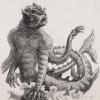
Moneta tagliata colonie caraibiche - 8 reales
forco83 ha aggiunto un nuovo link in Richiesta Identificazione/valutazione/autenticità
Ciao a tutti. Riprendo una discussione che avevo iniziato alcuni mesi fa riguardo una moneta d'argento tagliata utilizzata nelle colonie caraibiche britanniche. Grazie al vostro aiuto, ora so che la moneta è un 8 reales di Carlo IV d'argento; il peso - poco più di 5 grammi - fa pensare ad 1/5 di 8 reales, identico al peso di 1 scellino nei sistemi monetari britannici - di qui l'ipotesi della colonia britannica -. Il mistero riguarda la contromarca. Oltre alla 'scritta' che avevamo individuato, ho notato una seconda contromarca: una punzonatura che disegna una figura simile ad un quadrifoglio. Cosa ne pensate? Grazie. -

ID moneta: colonie spagnole del Sud America?
forco83 ha aggiunto un nuovo link in Richiesta Identificazione/valutazione/autenticità
Erroneamente ho iniziato una discussione riguardo questa moneta, fuorviato dal venditore. Esclusa la mia prima ipotesi e grazie ad altri utenti del forum, sembra che questo frammento di moneta in argento tagliata sia di origine Spagnola. Carlo III? La contromarca sembra "N10". Potrebbe essere stata in uso nelle colonie spagnole americane? Il periodo potrebbe essere il XVIII secolo? Grazie. http://www.lamoneta.it/topic/92621-id-moneta-prigionieri-di-guerra-ii-guerra-mondiale/
Lamoneta.it
La più grande comunità online di numismatica e monete. Studiosi, collezionisti e semplici appassionati si scambiano informazioni e consigli sul fantastico mondo della numismatica.
Il network
Hai bisogno di aiuto?
